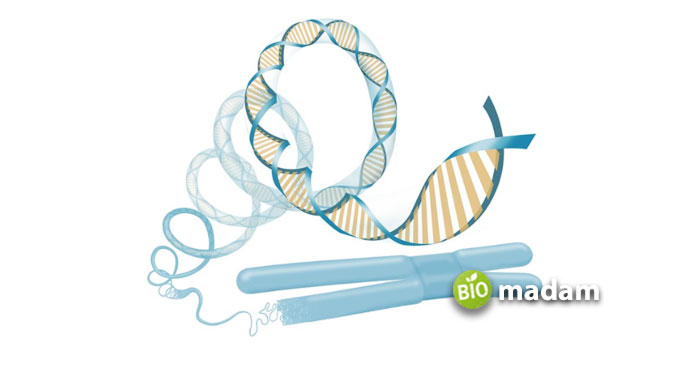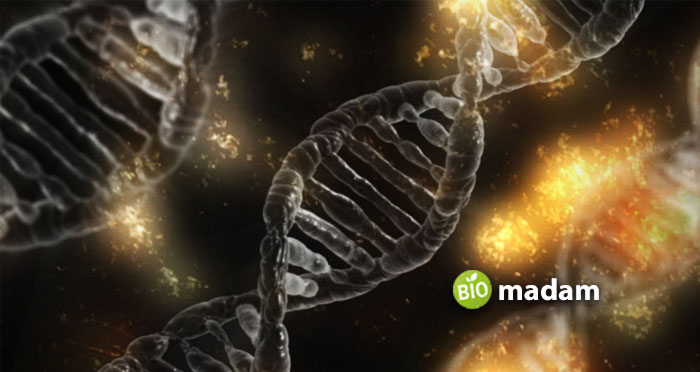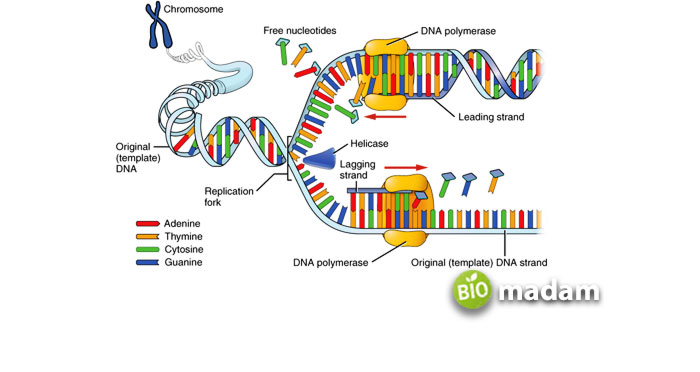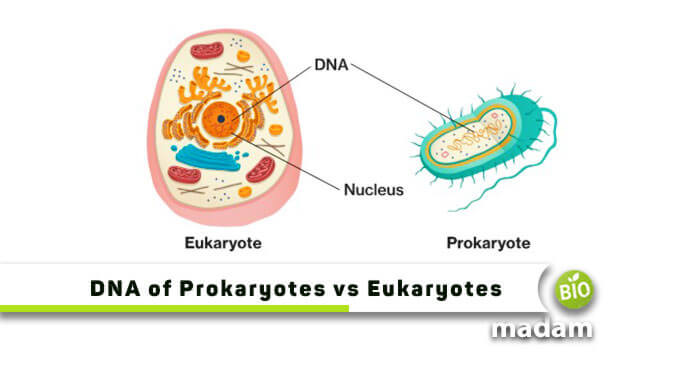Prokaryotes and eukaryotes are among the broad species in an ecosystem. Almost all organisms are classified into either prokaryotes or eukaryotes. You’ll see entirely different DNA structures and compositions in both classes that we will discuss today. But, first, comprehend what a DNA structure is and why it is necessary for survival.
An organic double-stranded chemical compound that encodes genetic information for the development, functioning, and reproduction of organisms is called Deoxyribonucleic Acid or DNA. All organisms contain DNA in their cells. It plays an essential role in passing heredity characteristics from parents to offspring. The primary difference between the DNA of prokaryotes and eukaryotes is that the former has a small amount of it while the latter acquires an ample amount. Let’s check out other differences through a comparison table.

Comparison Table
| Parameters | Prokaryotic DNA | Eukaryotic DNA |
| Presence | In Cytoplasm | In Nucleus |
| DNA Shape | Circular | Linear |
| Plasmid DNA | Present | Absent |
| Genome Copies | Only One | Multiple |
| No. of Genes | Very Few | Many |
| No. of Chromosomes | Single | Multiple |
| Histone Packaging | Absent | Present |
| Introns | Absent | Present |
| Replication Site | Inside Cytoplasm | Inside Nucleus |
| Nature of Replication | Continuous | Occurs during the S Phase of cell cycle |
| Efficiency of Replication | Rapid | Slow |
| Presence of Transposons | Present | Absent |
| DNA Size | Equal to or less than 0.1pg | More than 0.1pg |
| Repetitive Sequences | Less | More/Common |
| mRNA’s Nature | Poly-cistronic mRNA | Mono-cistronic mRNA |
Define Prokaryotic DNA
Have you ever wondered how do prokaryotic cells reproduce? DNA of prokaryotic cells is observed as circular, under a microscope, which is diffused in the dense cytoplasmic region called the nucleoid. These structures are always present to help these cells reproduce. A prokaryotic DNA is either freely floating in the cytosol or cytoplasm. In addition to chromosomal DNA, small, single-stranded circular plasmid DNA also contains additional information and certain genes like antibiotic resistance genes.
Such genes are essential for bacterial survival. Plasmid DNA is an essential component in genetic engineering techniques. The major region of the prokaryotic genome retains protein information due to its small size. Unlike eukaryotic DNA, prokaryotic DNA is not supercoiled because they lack histone proteins.
Depending upon the species, the DNA of prokaryotes ranges from a few thousand to a million base pairs (about 160,000-12.2000000 bp). Prokaryotic DNA is enriched with a group of genes, called operons, presenting a common promoter and terminator sequence. In other words, prokaryotic DNA is without introns (non-coding sequences) or non-functional DNA. These circular DNA structures have only one origin of replication, unlike eukaryotes. Hence, the process forms single replication folk and bubbles. Furthermore, the replication process in prokaryotes is more efficient, having a speed of 2000 nucleotides/second. Many active transposons are present in prokaryotes, which are moveable genetic components and involved in genetic diversity.
Define Eukaryotic DNA
The DNA of eukaryotes is properly enclosed in the nuclear/plasma membrane, found in the nucleus. Some membrane-bound organelles like mitochondria and chloroplast also have quantities of DNA; however, these DNAs are not the genomic part. The eukaryotic DNA stays linearly in the chromatin structure when the cell is not dividing. Soon as the organism starts its meiosis stages, the chromatin material condenses and forms a rod-shaped body called a chromosome. These bundles of chromosomes have DNA packed inside them. Furthermore, the DNA of eukaryotes is attached to complex histone proteins that eventually give them a compound structure. Eukaryotic DNA contains telomeres at both ends, which are repetitive sequences of nucleotides and protect chromosomes from deterioration.

A large number of base pairs is present in the chromosomes of eukaryotes. Eukaryotes are multicellular organisms, so they contain several copies of the genome. The amount of non-functional DNA in eukaryotic cells is high due to low gene density, which plays an essential role in gene expression. Unlike prokaryotes, eukaryotic genes have non-coding and coding sequences known as introns and exons. There are multiple origins of replications present with low efficiency (100 nucleotides/second). Contrary to prokaryotic DNA, the mobile genetic elements, i.e., transposons, are absent in the eukaryotic genome.
Similarities between the DNA of Prokaryotes and Eukaryotes
Eukaryotic organisms are multicellular and more complex in traits than unicellular prokaryotic organisms. A few similarities exist between prokaryotic and eukaryotic DNA:
- Both carry out the processes of replication, transcription, and translation.
- The ribosome is the site of translation in both organisms.
- mRNA, a type of RNA, acts as the primary unit of transcription in both.
- For base-pairing, the DNA of both domains follows the rule of Chargaff.
- Extra-chromosomal genetic material is present in both. Prokaryotes have plasmid DNA, whereas it’s mitochondrial DNA in eukaryotes.
Due to the complexity and similarity in their traits, both domains of organisms differ a lot based on the nature of DNA present in them. Following are the differences between the DNA of eukaryotic and prokaryotic organisms.

Differences between DNA of Prokaryotes and Eukaryotes
Location
Prokaryotic DNA
DNA of prokaryotes is found inside the cell’s cytoplasm, in the dense nucleoid region.
Eukaryotic DNA
On the contrary, the DNA of eukaryotes is found enclosed in the nucleus, covered by the nuclear/plasma membrane, of the cell. For e.g., the DNA of plants is in its nucleus.
Size of DNA
Prokaryotic DNA
The size of prokaryotic DNA is about or less than 0.1 pg.
Eukaryotic DNA
Contrary to prokaryotes, eukaryotes have DNA of size more than 0.1 pg.
Presence in Other Organelles
Prokaryotic DNA
The DNA of prokaryotic cells is absent in other organelles of a cell.
Eukaryotic DNA
On the other hand, eukaryotic DNA is found in other cell organelles, e.g., mitochondria.
Form/Shape of DNA
Prokaryotic DNA
The genome of prokaryotic cells is present in a circular form.
Eukaryotic DNA
Similarly, the genome of a eukaryotic cell is present in linear form with two ends.
Number of Genes
Prokaryotic DNA
Prokaryotic DNA contains a few genes with no introns present.
Eukaryotic DNA
In contrast, eukaryotic DNA has many genes where introns (non-coding sequences) are also present.
No. of Chromosomes & Genome Copies
Prokaryotic DNA
These DNAs are organized into a single chromosome, having only one copy of the genome.
Eukaryotic DNA
Unlike the above, these DNAs are organized into several chromosomes with more than one genome copy.
Non-Functional DNA
Prokaryotic DNA
As the prokaryotic DNA is not packed with tertiary histone proteins, it has less non-functional DNA.
Eukaryotic DNA
Likewise, eukaryotic DNA is properly packed with complex histone structures, so the amount of non-functional DNA is high.
Site & Origin of Replication
Prokaryotic DNA
The replication of prokaryotes occurs inside the cytoplasm with a single origin.
Eukaryotic DNA
On the contrary, the replication of eukaryotes occurs inside the nucleus with multiple origins.
The Efficiency of Replication Process
Prokaryotic DNA
DNA Replication process is less complex due to the small size of the prokaryotic genome; hence replication rate is rapid.
Eukaryotic DNA
In contrast, the replication process of eukaryotic DNA is more complex due to its larger genome size. Hence, the replication rate is slow.
Amount of GC/AT
Prokaryotic DNA
More GC content as compared to AT is present in prokaryotic DNA.
Eukaryotic DNA
Whereas eukaryotic DNA has more AT content than the GC.
ConclusionThe different types of cells in nature have DNA present in them, without which life is impossible. DNA of prokaryotes and eukaryotes differ based on quantity, packing, replication, and information content. Prokaryotic DNA is organized in a single circular chromosome, while in eukaryotes, DNA is arranged in several linear chromosomes. The replication process is similar to the DNA of prokaryotes and eukaryotes, but this process is comparatively simpler in prokaryotes. The eukaryotic genome is larger and more complex than the prokaryotic genome.

Hello, I would like to introduce myself to you! I am Chelsea Rogers, an experienced blog writer for science articles, holding an MPhil degree. My enthusiasm to grab the best knowledge, let it relate to botany, zoology, or any other science branch. Read my articles & let me wait for your words s in the comment section.

